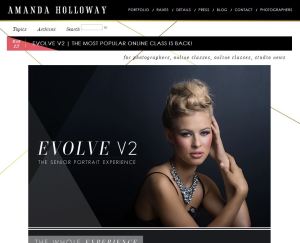As I read through the first six chapters of The History of Money Jack Weatherford puts an emphasis on money and the market as expected, but he also mentions the impact that money had on different cultures and civilizations to further move his history of money along.
For example, there is a lot of cause and effect analyzed such as:
Money → banking → a class of wealthier people → these wealthy people now could focus on art and other personal pursuits → the Renaissance (rebirth) period.
According to Weatherford, religion is one of the aspects of life that was effected by money and that is what I would like to take a closer look at in this blog post. The relationships between treasure, money, war, force, and the state were discussed in class, but I wanted to take it a step further and look at how religion was also a component of those relationships (This is something I don’t believe we specifically touched on in class).
GREEKS
One of the first claims Weatherford makes about religion is in Chapter 2 when discussing the Greeks and how Alexander linked the Greeks with far off lands with new commercial routes and market places on the Mediterranean. This new link created an opportunity for people to discuss religion in marketplaces.
“The common commercial culture, however, provided an opportunity for the rise of a common religion, open to all people. Christianity blazed through the cities of the Mediterranean as a totally new and revolutionary concept in religion” (pg. 44)
Because people were now linked through the exchange of goods the followers of Jesus were able to spread their message in the marketplaces. While this is a good example of the effect money had on Christianity it makes me wonder how different the spread of religion would have been. Would it just have happened slower? Would it have died out?
Money → marketplaces → towns and cities created and centered on market → marketplaces were focal points of religious discussion → helped Christianity spread
ROMANS
Next is Rome and its economic struggles and how it coincides with the birth of Christianity in Chapter 3. Weatherford states that Joseph (Mary’s husband) was in Bethlehem because one of the emperors Tiberius ordered every man to take his family and return to the place of his birth so they could make a census that would lead to a head tax.
Money → emperors consumed by need of wealth (even from their own people) → taxing people more and more → new head tax → Joseph and Mary had to be in Bethlehem for the tax where she gave birth to Jesus
“Not only did imperial Roman taxation play an odd, indirect role in the birth of Christ, but the New Testament contains repeated references to Roman taxation…” (pg. 54)
THE KNIGHTS TEMPLARS
The Knights Templars who created the first big banking institution were religious knights dedicated to the church. While liberating the Holy Lands they were allowed to keep all that they took from the Muslims. They kept all their spoils and treasures of war in castles that they owned which eventually turned into a place where the knights could deposit and give out funds. They were eventually shut down and some were killed by King Phillip IV due to his greed for the riches they possessed.
GOLD AND CHURCH
After mining in the Americas and making profits off of gold and silver the Spanish began to flaunt their gold in decorative ways. This new wealth helped to breathe life back into the Catholic Church and gave it the finances it needed to fight off Protestantism. At this point in time the Catholic Church encouraged the use of lavish decorations to inspire its followers. Statues of religious figures would be covered in gold and draped in silk. In this case the influx of gold and money impacted the appearance of the church.
MONEY AND RELIGION PARALLELS
It is interesting to see what an influence money had on Christianity especially when it taught people that, “wealth increases the risk of mistaking ownership of goods for quality of life” and to be on guard for greed (christianity.org). Jesus talked about giving up worldly possessions to the poor and to give priority to God and not greed. For a religion that denounces too much wealth and its corrupt powers, money played a role in its conception.
Churches view of money and greed: http://www.christianity.org.uk/index.php/money.php
While money and religion can be looked at as separate entities that effect each other, money could also be seen as a religion itself. According to the Merriam Webster online dictionary religion is an interest, a belief, or an activity that is very important to a person or group.
With the way money has been portrayed in this book it is easy to see how money could be a religion to some:
- The Medici family separated themselves from religion with money and banking. The replaced religion with greed and money.
- “Unhindered by the religious principles of the Templars, they had only one ambition: to take home a profit.” (pg. 72)
- King Phillip IV of France was desperate for money so he debased the silver currency. He did whatever he could to take the wealth that the Templars had amassed by accusing them of horrible crimes that lead to their deaths. His belief in money and the power it could bring him outweighed the consequences of having knights persecuted (pg. 68)
Just like there are many different religions that mean different things to people, money can also mean different things to different people. To a rich man a hundred dollar bill might not be worth very much but to a poor college student one hundred dollars can get you a lot of crappy meals. The Catholic Church used to have a much larger influence on every part of society and money plays a similar role in the fact that its value is never questioned and everyone believes in it. Money plays an essential role in all of our lives, but to some it is the most important thing.
“In the movie “Wall Street”, a man goes against his values in order to get ahead in his career in the financial world, with the risk of ruining everything in his life. Similarly, in the TV show “How I Met Your Mother”, one of the characters chooses not to pursue his dream job, and instead he settles for one he does not like but gives him a higher income.” (Money is the world’s first shared religion)
These are two modern day examples of how we let money influence our lives because of our belief in it. It is amazing how we went from a culture with no bills, loans, and coins, to one that is dominated by it. This book really serves to show the ups and downs that currency and money has faced at the hands of greedy people.
This website provides a lot of great examples about how religion and money are similar and what money means to people: http://www.studentpulse.com/articles/241/the-universal-prayer-how-money-became-the-worlds-first-shared-religion
I hope this post provided a new perspective on how we look at this book. It is important to remember that what takes up a small role in this book might not be the case in real life. Not everything that Weatherford states is correct and he can’t retell all of history otherwise the book would be too long.
While this topic is a departure from technology and texts I tried to look at the book from a fresh perspective that we hadn’t yet talked about in class. I was at a loss for what to discuss in this first post and the mentions of religion in this book were what stood out to me so I chose to talk about them.
Questions:
What does money mean to you?
Can you imagine your life without it?
How has technology made the use of money more prominent in our lives?
Are there any other examples in the book that could make money seem like a religion?
(↓Click for an enlarged version↓)















